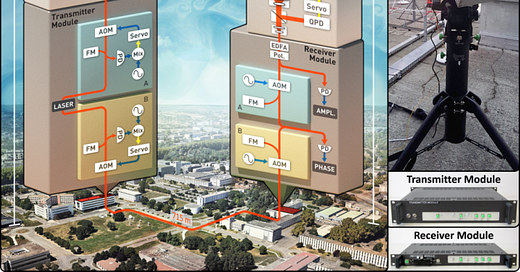This week we will discover a breakthrough in Prostate Cancer diagnosis which will change the way that we approach the disease. We also look at a world record breaking laser, a lip reading AI and a way to talk to the dead (that doesn’t involve fraudulent mediums or Ouija boards).
Easier Prostate Cancer Diagnosis
The most common cancer in men is prostate cancer. Almost 100% of men will eventually get some form of prostate cancer (if they live long enough) however only a few will die from that cancer. The current way to diagnose Prostate cancer is a biopsy which is quite invasive and can lead to unwanted complications.
Scientists from the Biomaterials Research Center at the Korean Institute of Science and Technology and the Asian Medical Center in South Korea have developed an AI that can diagnose prostate cancer using urine samples. The process takes approximately 20 mins and has almost a 100% accuracy rate (biopsies are only samples of tissue so are not 100% accurate and other methods of diagnosis only provide up to 30% accuracy).
The method uses an electrical signal based ultra sensitive biosensor using 4 different cancer factors. The use of multiple cancer factors allowed the massive improvement in accuracy of diagnosis. The system may remove the need for biopsies for diagnosis. It is quick and inexpensive and will reduce the burden on hospitals and surgeons. Patients will no longer have to endure the pain and potential complications of biopsies. Given the simplicity of the process it may also become an annual test for men with risk factors (age or family history) allowing any cancers to be detected far earlier than current practice. The original paper can be found here.
Record Breaking Laser
Researchers from the International Center for Radio Astronomy Research and The University of Western Australia have set a world record for the most stable transmission of a laser signal through the atmosphere.
The team developed a phase stabilization technology using self guiding optical terminals which allows the laser signals to be sent from one point to another without interference from the atmosphere. The system corrects for atmospheric turbulence in 3D (up-down, left-right and along the line of flight).
The system is the most precise method available for comparing the flow of time between two separate locations. If you have one optical terminal on the ground and another on a satellite in space you can explore the fundamental laws of physics (including Einstein’s Theory of General Relatively). The system will also improve optical communications and satellite based studies of Earth.
The system was originally developed to ensure that incoming signals for the Square Kilometer Array telescopes and radio receivers in South Africa and Western Australia are synchronized.
Lip Reading from a distance
Sony has released their Visual Speech Enablement system to read lips from a distance no matter how noisy the environment. Facial recognition can identify faces in the crowd, now this system can take a record of a conversation without microphones. The system uses a series of cameras and an AI augmented for lip reading.
The system is designed to assist in areas such as factory automation, voice activated machines and kiosks. A mobile version could auto generate captions for the hearing impaired. The current system only captures lip movement however a future system may combine facial recognition with visual speech capture giving significant privacy issues. We may have to keep wearing masks to keep our conversations private.
Talking to the Dead
Microsoft has filed a patent for an AI that could be used to mimic a specific person. The AI would listen to that person’s conversations, read their social media posts, written letters, electronic messages and any other communication. It would then create a special index in the theme of the specific person’s personality.
This index would be used to develop a chatbot so that you could talk to that person as if they were still here. One application would be talking to loved ones after they have died. This may bring comfort to some but I suspect it might feel a little creepy to many.
Robotic Safety Buoy
U-Safe have developed a Robotic Safety Buoy for use in rescuing people at sea or from the waves near shore. The buoy has twin turbines that can power the buoy if it is facing up or down (in case a wave flips the buoy over on the way to a rescue). It is remote controlled and can be launched into the ocean from 30 meters above the water (rescue helicopters, cliffs, large boats etc.).
There are handles for the recused person to grab onto and the buoy will automatically bring them back to safety. There are lithium ion batteries that can be recharged in place or swapped out for instant reuse. The buoy will steer clear of obstacles and safely reach the person being rescued. It has a 15 kph top speed, a range of 300 meters and can operate for 30 mins. The buoys are manufactured in Portugal and there are distributors worldwide.
Paying it Forward
If you have a start-up or know of a start-up that has a product ready for market please let me know. I would be happy to have a look and feature the startup in this newsletter. Also if any startups need introductions please get in touch and I will help where I can.
If you have any questions or comments please email me via my website craigcarlyon.com or comment below.
I would also appreciate it if you could forward this newsletter to anyone that you think might be interested.
Till next week.




